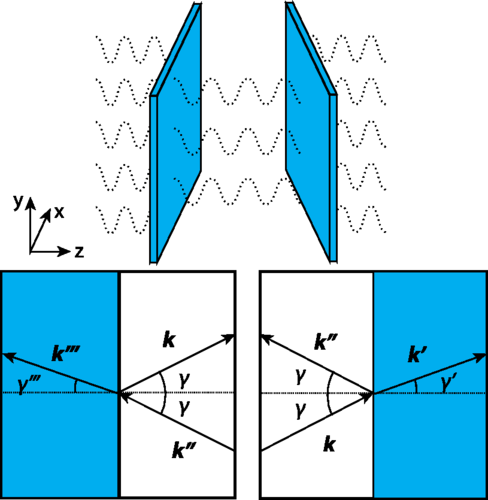March 4, 2015 report
Theorist suggests a way to test gravitational Casimir attraction

(Phys.org)—James Quach, a research fellow at Tokyo University is suggesting that it might be possible to observe a gravitational Casimir attraction by carrying out an experiment he has envisioned. In his paper published in the journal Physical Review Letters, he suggests that it might be possible to detect such an attraction using two mirrors that are able to reflect gravitational waves.
Despite thousands of years of thought and study, scientists still cannot explain gravity—one current theory suggests its force comes about due to gravitational particles called gravitons, but no one has been able to prove they exist. In his paper, Quach suggests an experiment using superconducting materials may be the key.
Prior research has shown that if two sheets of metal are placed near one another in a vacuum, they will attract each other. This is known as the Casimir attraction, and it comes about because the sheets reflect electromagnetic waves—the same sorts of waves remain unrestricted outside of the space between the sheets and exert a slight force—thus the sheets are not drawn to each other, they are actually pushed. Some theorists have speculated that Casimer attraction may work with gravity as well, and if a way could be devised to show it does, that would go a long way towards proving that gravitons are real. But of course, no one has yet found any sort of mirror that might be used to reflect gravity.
Quach suggests that a mirror made from a superconducting material might do the trick, if it is first cooled down to near absolute zero. He has done the math and found that such a setup might actually work. He believes that if such an experiment were carried out, it would prove the existence of gravitons. Not mentioned are the ramifications should the experiment succeed. An ability to reflect gravity "waves" it would seem, would allow scientists to create shields or coatings that when applied to objects would make them weightless, because the gravity pulling them down would be reflected away. That, of course, would completely change such things as transportation, industrial processing and of course air and space travel.
More information: Gravitational Casimir Effect, Phys. Rev. Lett. 114, 081104 – Published 25 February 2015. dx.doi.org/10.1103/PhysRevLett.114.081104 . On Arxiv: arxiv.org/abs/1502.07429
ABSTRACT
We derive the gravitonic Casimir effect with nonidealized boundary conditions. This allows the quantification of the gravitonic contribution to the Casimir effect from real bodies. We quantify the meagerness of the gravitonic Casimir effect in ordinary matter. We also quantify the enhanced effect produced by the speculated Heisenberg-Couloumb (HC) effect in superconductors, thereby providing a test for the validity of the HC theory, and, consequently, the existence of gravitons.
Journal information: arXiv , Physical Review Letters
© 2015 Phys.org




















